Exercise Puts Oregon's Civil Support Team to the Test for Certification
 Oregon Air National Guard Staff Sgt. Ryan Siggins, a survey team member with the 102 Civil Support Team, removes his protective suit after going through the decontamination process at Silverton High School, Silverton, Ore., March 10. Siggins was decontaminated after he entered the high school to search for any potential chemical, biological, radiological or nuclear contaminants as part of a joint external evaluation by U.S. Army North, between local authorities and the 102 Civil Support Team, Oregon National Guard, to certify the CST as an operational unit.
Oregon Air National Guard Staff Sgt. Ryan Siggins, a survey team member with the 102 Civil Support Team, removes his protective suit after going through the decontamination process at Silverton High School, Silverton, Ore., March 10. Siggins was decontaminated after he entered the high school to search for any potential chemical, biological, radiological or nuclear contaminants as part of a joint external evaluation by U.S. Army North, between local authorities and the 102 Civil Support Team, Oregon National Guard, to certify the CST as an operational unit.  Staff Sgt. Jason Tarpley, Bravo Team survey chief, helps Oregon Air National Guard Staff Sgt. Ryan Siggins into his protective suit.
Staff Sgt. Jason Tarpley, Bravo Team survey chief, helps Oregon Air National Guard Staff Sgt. Ryan Siggins into his protective suit.
Lt. Col. Lance Englet, 102 Civil Support Team commander, receives a report from incident commander Rick Lewis, Silverton Chief of Police, and Capt. Ed Grambusch, Training Coordinator for Silverton Fire Department.

Sgt. Joseph Plueard and Oregon Air National Guard Staff Sgt. Ryan Siggins, search a dummy to detect potential chemical, biological, radiological or nuclear contaminants at the scene of a mock school shooting.

A Silverton police officer guards a doorway while other officers talk to a \"victim\" during a 102 Civil Support Team evaluation.

Lt. Col. Lance Englet, 102 Civil Support Team Commander, discusses the unit\'s capabilities with incident commander Rick Lewis, Silverton Chief of Police, and Capt. Ed Grambusch, Training Coordinator for Silverton Fire Department.

High school students flee a simulated "attack" during a 102 Civil Support Team evaluation at the Silverton High School auditorium in Silverton, Ore., March 10. The students are members of the Silverton High drama club who portrayed victims as part of a joint external evaluation by U.S. Army North, between local first responders and the 102 Civil Support Team, Oregon National Guard, to certify the CST as an operational unit.
Photos by SGT Eric Rutherford - Oregon National Guard Public Affairs Office
Exercise Puts Oregon's Civil Support Team to the Test for Certification
Oregon National Guard Public Affairs Office
Story by SGT Eric Rutherford
SILVERTON, Ore. – Gunshots rang out and screams echoed through the halls of the local high school.
One student lay bleeding on the floor, while others cower behind seats in the auditorium where moments earlier, several high school seniors had been preparing for an assembly on the morning of March 10.
The seniors unknowingly stumbled upon "Cory," a drop-out plotting revenge on his classmates. When confronted, Cory became enraged and opened fire before hurling a glass jar filled with liquid at the students, filling the room with an overwhelming vapor.
This nightmarish scenario might conjure up memories of other violent real-world incidents, but for the Silverton High School drama department, local responders, and the Oregon National Guard's 102 Civil Support Team, it was a day to work together on a joint exercise aimed at certifying Oregon's CST to be fully functional and operational.
"We evaluate the team every 18 months," said Todd Chance, an exercise specialist with U.S. Army North. "It is required by National Guard Bureau and Congress. During the evaluation we do all of our military training protocols to ensure that they can perform whenever they go into an environment that requires a technically correct response."
As part of the evaluation, students from Silverton High School drama club acted as the "victims." Silverton Police officers, Silverton Fire Department, Woodburn Ambulance, Oregon State Police, North Marion County Communications 9-1-1 Dispatch Center, and Silverton Hospital Network all participated in the training evaluation, to make the scenario more realistic.
"We are called the civil support team because that is exactly what we do," said Capt. Gregory Ramirez, medical operations officer for the CST. "We work with civil authorities to help support the intent of the incident commander."
The incident commander has a set of objectives to meet and we have the resources to help meet those needs, he added.
Some of those needs might be to indentify a substance or use their reach-back capabilities to bring on additional resources, should the team need them, said Ramirez.
In the scenario the group of seniors, injured and suffering from respiratory problems, fled the building to find Silverton police officers who sized up the situation and realized they needed additional assistance. This is when the 102 Civil Support Team was requested.
"They never go in cold," said Conrad Striegl, team chief and evaluator from U.S. Army North. "We do pre-training leading up to this. It should be like another day at the office for them if we do our job right."
Rick Lewis, Silverton chief of police, acted as incident commander during the exercise. He coordinated with Lt. Col. Lance Englet, commander of the 102 Civil Support Team to determine what actions they should take and how best to work with responders and the teams assets.
"As soon as they got on site, they interfaced with Incident Command and let them know what their capabilities are," said Chance, who traveled from Fort Sam Houston in San Antonio, Texas, to evaluate the team.
The advance party arrived and staged their vehicles in the incident command site and began unloading and inventorying their equipment. Team members conducted a perimeter survey using detection equipment to determine the area affected by Cory's attack. Once the initial survey was complete, the rest of the CST arrived, bringing their mobile laboratory, communications equipment, and decontamination gear.
Chance said the teams can train in sterile environments only so much. The CST needs to be able to train in actual environments to get the most out of the scenario.
"Now we have put it into a realistic scenario where the taxpayer gets their money," Chance said. "They can see these guys responding to an 'if-this-were-to-happen-for-real' event."
The team set up the medical tent, decontamination site, communications equipment and survey gear as though it was a real scenario.
"We train for this," said Englet. "The training reflects different environments that we already respond to ... a school, a house, a garage, an unknown chemical or device that is explosive. This isn't a scenario that is made up. This is something that is based on [other Civil Support Teams'] real-world responses and real world responses that this team has been on."
Once the site was set up and briefings had taken place, the survey team suited up and went into the site to take samples and evaluate the scene. With detection devices loaded onto the small all-terrain utility vehicle, two team members wearing large protective suits went in.
"Ultimately the fire department and the police are going to be the first on scene and its good to have that training and interoperability so they know if there is something that they want more investigation on," said Oregon Air National Guard Staff Sgt. Ryan Siggins, a survey team member.
Siggins meticulously scanned windows and doors outside the building. He and fellow survey team member Sgt. Joseph Plueard, determined if any chemical, biological, radiological or nuclear contaminants were in the "hot-zone."
After the survey was complete, Siggins and Plueard moved to the decontamination site through large shower tents, scrubbing down to ensure they brought nothing hazardous back into the "cold-zone."
Throughout the training, ARNORTH evaluators took notes to ensure the team was meeting the standards.
From the decontamination tent, the survey team moved to the medical evaluation tent where they were examined by the unit's medical officer to ensure they were physically stable after being in the suits for extended periods of time.
After the team finished the survey and briefed the responders, determinations were made on how to go about cleaning the area to restore it for use and allow the community access to the facility again.
"I think we are doing great," said Englet. "The team is fantastic. They are focused, dedicated soldiers and airmen. The real benefit is the fact that we have genuine first responders as part of the exercise."
Englet said many soldiers and airmen may work with these agencies full-time, and be part time citizen soldiers, giving back to their communities at the same time they help it.
"The National Guard is about the community first," said Englet. "We live in these communities ... it is our own back yard."
After the evaluation was complete, the evaluation team was unanimous in recognizing the 102 CST as a well prepared, professional organization, and proficient in all areas evaluated. The evaluation team spoke highly of the 102 Civil Support Team and complimented each section.
"They are doing well," said Striegl, who also provides training support for eight other Civil Support Teams on the West Coast. "The 102 has always been a strong team. The citizens of Oregon are lucky."
With the exercise behind them, the 102 Civil Support Team is ready to respond to real world call-outs. The next big event planned for the team is the scheduled move from their existing location to the new Army Aviation Support Facility in Salem.
SILVERTON, Ore. – Gunshots rang out and screams echoed through the halls of the local high school.
One student lay bleeding on the floor, while others cower behind seats in the auditorium where moments earlier, several high school seniors had been preparing for an assembly on the morning of March 10.
The seniors unknowingly stumbled upon "Cory," a drop-out plotting revenge on his classmates. When confronted, Cory became enraged and opened fire before hurling a glass jar filled with liquid at the students, filling the room with an overwhelming vapor.
This nightmarish scenario might conjure up memories of other violent real-world incidents, but for the Silverton High School drama department, local responders, and the Oregon National Guard's 102 Civil Support Team, it was a day to work together on a joint exercise aimed at certifying Oregon's CST to be fully functional and operational.
"We evaluate the team every 18 months," said Todd Chance, an exercise specialist with U.S. Army North. "It is required by National Guard Bureau and Congress. During the evaluation we do all of our military training protocols to ensure that they can perform whenever they go into an environment that requires a technically correct response."
As part of the evaluation, students from Silverton High School drama club acted as the "victims." Silverton Police officers, Silverton Fire Department, Woodburn Ambulance, Oregon State Police, North Marion County Communications 9-1-1 Dispatch Center, and Silverton Hospital Network all participated in the training evaluation, to make the scenario more realistic.
"We are called the civil support team because that is exactly what we do," said Capt. Gregory Ramirez, medical operations officer for the CST. "We work with civil authorities to help support the intent of the incident commander."
The incident commander has a set of objectives to meet and we have the resources to help meet those needs, he added.
Some of those needs might be to indentify a substance or use their reach-back capabilities to bring on additional resources, should the team need them, said Ramirez.
In the scenario the group of seniors, injured and suffering from respiratory problems, fled the building to find Silverton police officers who sized up the situation and realized they needed additional assistance. This is when the 102 Civil Support Team was requested.
"They never go in cold," said Conrad Striegl, team chief and evaluator from U.S. Army North. "We do pre-training leading up to this. It should be like another day at the office for them if we do our job right."
Rick Lewis, Silverton chief of police, acted as incident commander during the exercise. He coordinated with Lt. Col. Lance Englet, commander of the 102 Civil Support Team to determine what actions they should take and how best to work with responders and the teams assets.
"As soon as they got on site, they interfaced with Incident Command and let them know what their capabilities are," said Chance, who traveled from Fort Sam Houston in San Antonio, Texas, to evaluate the team.
The advance party arrived and staged their vehicles in the incident command site and began unloading and inventorying their equipment. Team members conducted a perimeter survey using detection equipment to determine the area affected by Cory's attack. Once the initial survey was complete, the rest of the CST arrived, bringing their mobile laboratory, communications equipment, and decontamination gear.
Chance said the teams can train in sterile environments only so much. The CST needs to be able to train in actual environments to get the most out of the scenario.
"Now we have put it into a realistic scenario where the taxpayer gets their money," Chance said. "They can see these guys responding to an 'if-this-were-to-happen-for-real' event."
The team set up the medical tent, decontamination site, communications equipment and survey gear as though it was a real scenario.
"We train for this," said Englet. "The training reflects different environments that we already respond to ... a school, a house, a garage, an unknown chemical or device that is explosive. This isn't a scenario that is made up. This is something that is based on [other Civil Support Teams'] real-world responses and real world responses that this team has been on."
Once the site was set up and briefings had taken place, the survey team suited up and went into the site to take samples and evaluate the scene. With detection devices loaded onto the small all-terrain utility vehicle, two team members wearing large protective suits went in.
"Ultimately the fire department and the police are going to be the first on scene and its good to have that training and interoperability so they know if there is something that they want more investigation on," said Oregon Air National Guard Staff Sgt. Ryan Siggins, a survey team member.
Siggins meticulously scanned windows and doors outside the building. He and fellow survey team member Sgt. Joseph Plueard, determined if any chemical, biological, radiological or nuclear contaminants were in the "hot-zone."
After the survey was complete, Siggins and Plueard moved to the decontamination site through large shower tents, scrubbing down to ensure they brought nothing hazardous back into the "cold-zone."
Throughout the training, ARNORTH evaluators took notes to ensure the team was meeting the standards.
From the decontamination tent, the survey team moved to the medical evaluation tent where they were examined by the unit's medical officer to ensure they were physically stable after being in the suits for extended periods of time.
After the team finished the survey and briefed the responders, determinations were made on how to go about cleaning the area to restore it for use and allow the community access to the facility again.
"I think we are doing great," said Englet. "The team is fantastic. They are focused, dedicated soldiers and airmen. The real benefit is the fact that we have genuine first responders as part of the exercise."
Englet said many soldiers and airmen may work with these agencies full-time, and be part time citizen soldiers, giving back to their communities at the same time they help it.
"The National Guard is about the community first," said Englet. "We live in these communities ... it is our own back yard."
After the evaluation was complete, the evaluation team was unanimous in recognizing the 102 CST as a well prepared, professional organization, and proficient in all areas evaluated. The evaluation team spoke highly of the 102 Civil Support Team and complimented each section.
"They are doing well," said Striegl, who also provides training support for eight other Civil Support Teams on the West Coast. "The 102 has always been a strong team. The citizens of Oregon are lucky."
With the exercise behind them, the 102 Civil Support Team is ready to respond to real world call-outs. The next big event planned for the team is the scheduled move from their existing location to the new Army Aviation Support Facility in Salem.



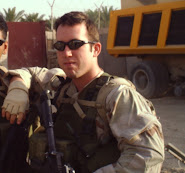










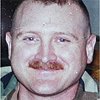


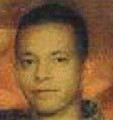
















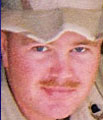
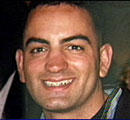





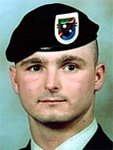


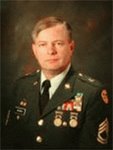

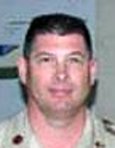
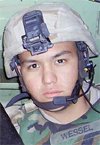
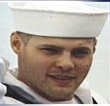
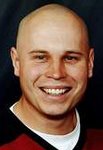
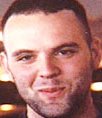



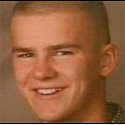
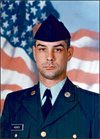


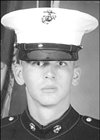
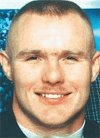
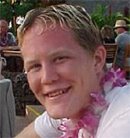

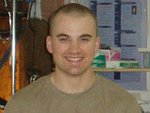




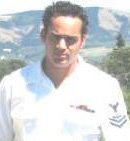

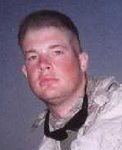
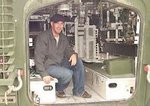




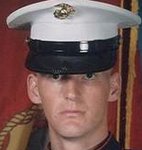
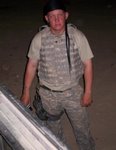
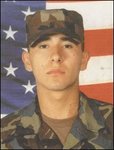


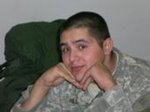
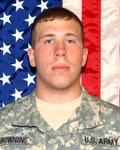





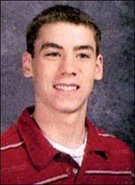
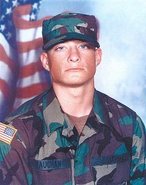
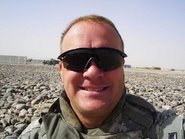
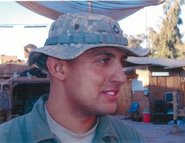
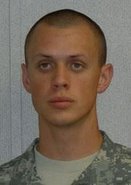
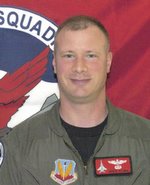
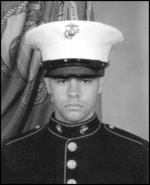
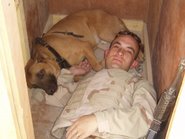
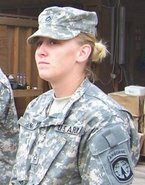

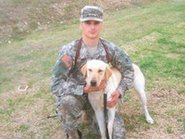

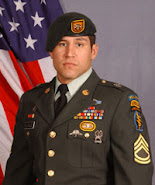

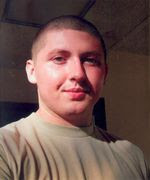



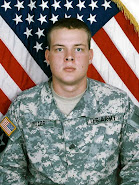
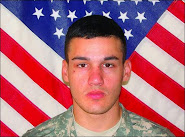



No comments:
Post a Comment